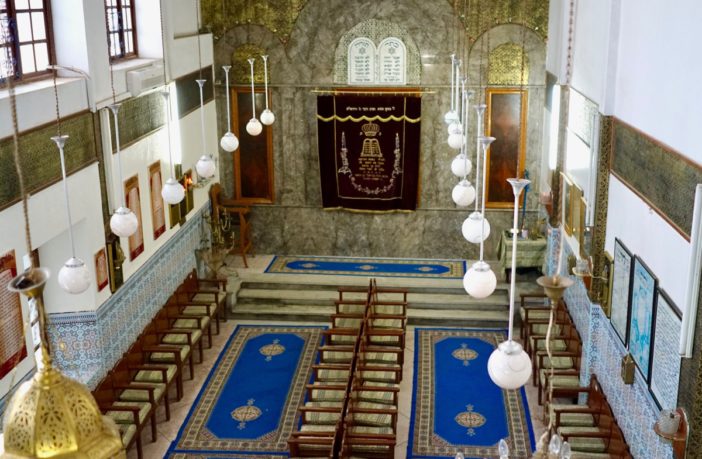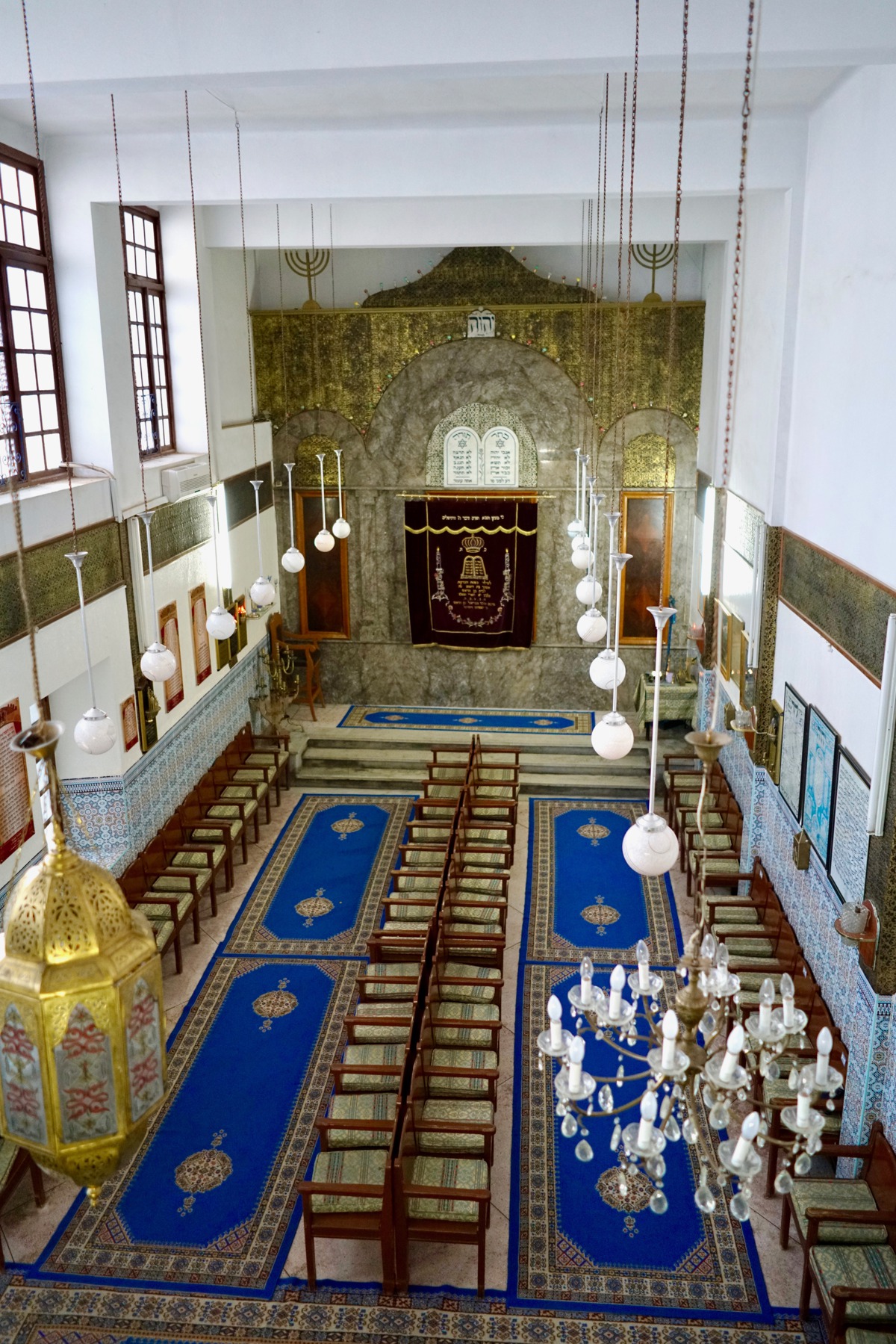Deseretnews
By William Hamblin and Daniel Peterson
The interior of the Laazama Synagogue, in Marrakesh, Morocco, founded in 1492. Jewish emigrants from Spain founded it, which is still in operation, though mainly for Jewish tourists.
To people pondering with dismay the situation in today’s Middle East, it may seem strange that less than a century ago Jews and Muslims frequently lived together in relative harmony. But the Jews of Morocco, with a 2,000 year presence in the region, provide a classic example.
Though its precise location is unknown, the land of Tarshish to which Jonah fled (Jonah 1:3) is often equated with Spain. If that identification is correct, Jewish merchants may have visited Spain and Morocco as early as the 10th century B.C., when Solomon is said to have traded there (1 Kings 10:22). Small permanent Jewish communities first appear in Morocco (Mauritania) during the time of the Roman Empire.
At that time, Jews were scattering throughout the empire, at first for economic reasons and then, after A.D. 70, as refugees from the near-genocidal Roman wars in Judea. In Romans 15:22-29, Paul talks about his plans — probably never fulfilled — to visit Jews in Spain, which may have included a hoped-for visit to the smaller Jewish communities in Morocco.
William Hamblin
The shrine of Shalom bel Hensh, a Jewish Moroccan saint; the Hebrew inscription on the left is the Ten Commandments; on the right are photos of other important Moroccan Jewish scholars.
Paradoxically, the Arab Muslim conquests of North Africa and Spain in the seventh and early eighth centuries brought an increase of Jewish migration into Morocco and nearby Spain. This migration began with Jewish merchants, but soon expanded to include Jews from all walks of life. Most medieval Jewish migrants went to Spain, which afforded greater economic and cultural opportunities.
However, the wars of the Spanish Christian Reconquista (1002-1492) created political instability, causing Jews to begin to leave Spain. The completion of the Christian reconquest of Spain from the Muslims culminated in the 1492 Alhambra Decree of Ferdinand and Isabella, which demanded either conversion or expulsion of all of Spain’s Jews. (Five months later, Columbus departed on the expedition that discovered the New World.)
Portugal issued a similar decree in 1497. These expulsions transformed the nature of the Jewish communities in Morocco.
As a general rule, Jewish refugees from Spain after 1492 were welcome throughout the Muslim world, largely for economic reasons. As a contemporary Sultan of Turkey is reported to have said, “The king of Spain is a fool; by expelling his Jews he impoverishes himself and enriches me.” Many of these Jewish emigrants were skilled craftsmen, merchants, bankers and scholars.
The most famous Spanish Jewish refugee was the rabbi and philosopher Moses Maimonides (1135-1204), who was born in Cordoba but migrated to Fez, Morocco, where he composed his famous commentary on the Mishnah. He later moved to Egypt, where he served as court physician to Saladin and as the official representative of the Egyptian Jews to the Sultan.
The Jews expelled from Spain spread throughout the Mediterranean, but most went to North Africa, just a short distance across the Straits of Gibraltar. The majority settled in Fez or Marrakesh, transforming Morocco’s greatest cities at the time into centers of Jewish economic, cultural and scholarly activity. The Jewish quarter of southeast Marrakesh flourished for centuries. In 1492, Jewish emigrants from Spain founded the Laazama (al-Azama) Synagogue, which is still in operation, though mainly for Jewish tourists.








